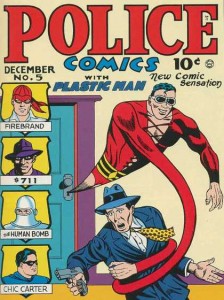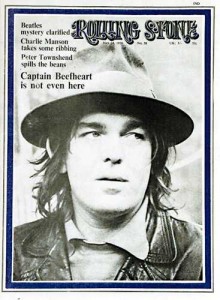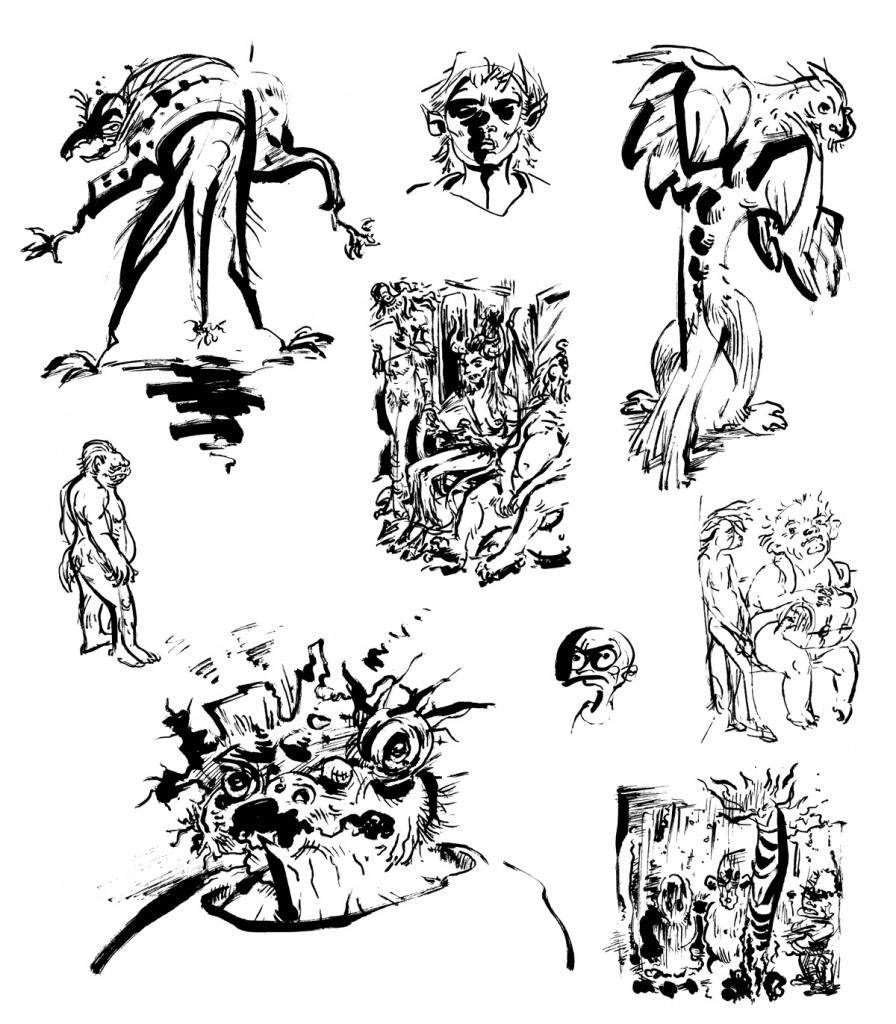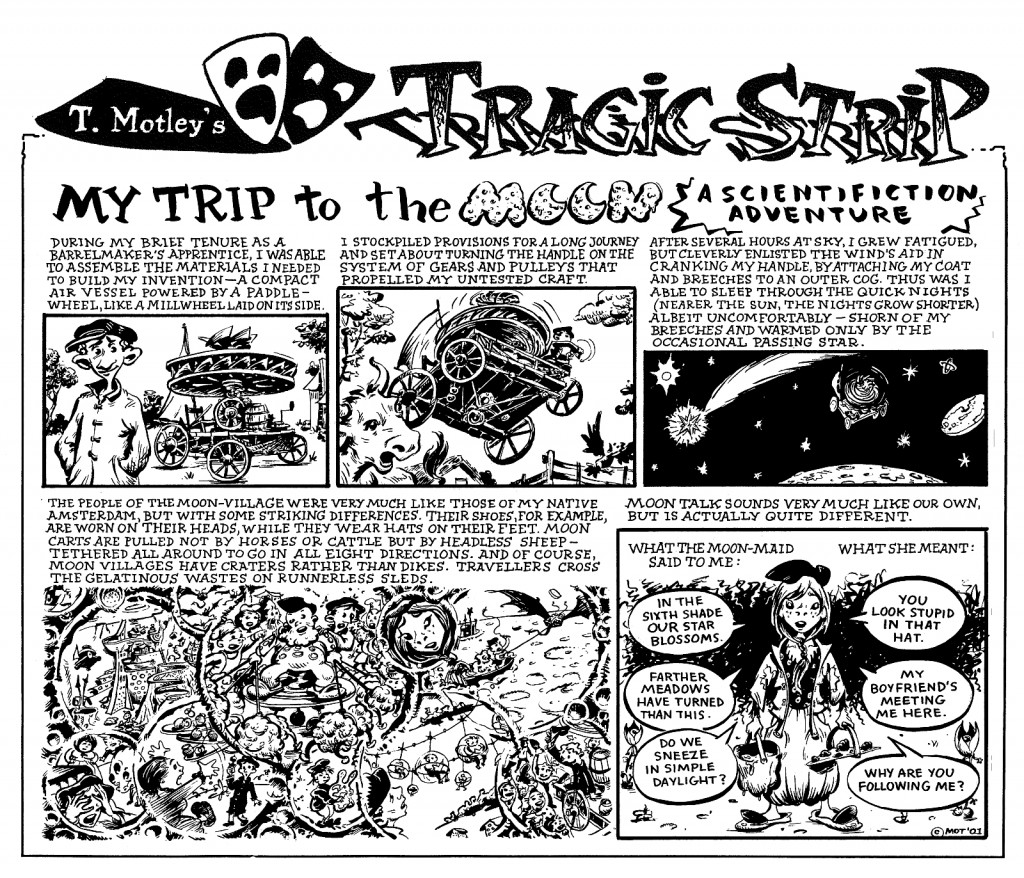
I discovered Tom Motley’s artwork while doing research for an entry into Comic Attack’s Unsung Characters of Comicdom column. I had the first issue of Tom’s self-published comic, Steel Pulse, but I didn’t feel I had a enough information about the character to do him justice. I did a Google search for Tom’s name and after checking out his blog and website, I sent him an e-mail. During our correspondence, he offered to send me copies of the entire Steel Pulse mini-series. So, I sent him my mailing address. Shortly after, I received the most generous package I have received from any artist to date. It included all four of the comics that I had inquired about, as well as a stack of mini comics containing his work and a letter from Tom written on some of the coolest personalized stationary I’ve ever seen. Needless to say, after receiving this potpourri of comic goodness, I had more than enough material to put together a comprehensive article about Tom’s comic, Steel Pulse. Before the publication of the aforementioned article, I had ample opportunity to review and study Tom’s artwork. He has an extensive portfolio, and I was extremely impressed by his body of work. I suggested to my Editor in Chief and contributing columnist, Andy Liegl, that we spotlight him as Comic Attack’s Artist Of the Month. To which he agreed without hesitation.
Tom Motley’s talent is only surpassed by his humility (to the point of humorous self-deprecation). He’s a man who loves the medium of comics and enjoys sharing that love with others of all ages. He’s dedicated most of his life to either drawing, reading, or teaching comics. Tom has shared and taught his craft to adults and children from across the globe in one fashion or another. Now, he can add Nashville, TN (my current residence) to that list. For this interview, Tom answered my laundry list of questions with grace and breadth. The responses of which, according to Tom, could possibly equate to a short biography of his life.
Comic Attack: When did you first start expressing your ideas through comics? What attracted you to the medium?
Tom Motley: My dad kept his comic collection from the 40s & 50s, so on top of all the 60s/70s era Marvel, DC, Archie, Gold Key, Warren, Mad [Magazines], Underground [comix], and whatnot, I [also] grew up reading Classics Illustrated, EC [comics], Uncle Scrooge, and most everything else. As a kid, I thought I wanted to be a lawyer, but by the time I was fourteen, the urge to make comics was too strong to suppress. It’s the only thing I’ve ever really wanted to do besides teaching. The reason I love to teach comic art is that I never tire of talking about the tricks and turns involved in making comics work, and the marvelous effects they can achieve. What keeps me devoted to the medium is its cognitive dissonance. The images have depth but are really flat. They appear to move forward but really stand still. You can show the reader one thing and tell them something different. This permits endless fun.

CA: Who have been your biggest artistic influences within the comic book community and historically?
TM: I try to be influenced by everybody. The most important comic artist to me is Jack Cole—particularly the Plastic Man stuff he did in 1949-50 and the watercolors he later did for Playboy. I think my biggest influence overall is Peter Blegvad, more for his songs and writings than for his comic strips, great as those are. Fine artists I often look at include: [Francisco] Goya, [Edgar] Degas, [Henri] Matisse], [Pablo] Picasso, [William] Blake, and [Heinrich] Kley. As a comic creator, literary influences are just as important. For me, it’s experimental formalists and metafiction writers like [Jorge Luis] Borges, [Rayman] Federman, and [Raymond] Queneau and the other Oulipians. My thinking about the relations between genres has been helped tremendously by reading Northrop Frye.
CA: How would you describe Tragic Strip, the comic strip that you do for the Brooklyn Rail, to someone who has never heard of it? How frequently does the strip appear?
TM: I usually say they’re short short stories that end badly for the characters, but that’s an oversimplification. Really, they’re musings and story fragments that’ve simmered for years in my notebooks. Sometimes, I’ll take an idea for an epic and boil it down to the three or four images. The Tragic Strip appears monthly. It’s a comfortable schedule that lets me vent my spleen and still have time for teaching and other projects.
CA: What is/was your specific involvement with Fandom House, Squid Works, and Acme Comics?
TM: I guess I’m the co-founder or something like that. Acme Comics was a kind of comics workshop, open to the public, where we critiqued each other’s work in progress (often more hurtfully than helpfully, I regret to say) and published anthologies. Fandom House was a mail order mini-comic distributorship. Both were run by Dennis Pimple, but I’m the guy who talked him into it. Dennis posted his version of the story on his website. When Dennis finally got fed up and kicked everybody out of his living room, we regrouped as the Squid Works. The Squids publish their mini-comics individually and work together to sell them. Since leaving Denver, I’ve remained a member in absentia.
CA: You conducted ‘comic jams’ with Squid Works. For those who aren’t familiar with this term, what is a comic jam, and what’s involved in conducting one?
TM: A comic jam is when one cartoonist creates a comic panel and then passes the page to another artist to add the next panel. Through the work I did with Hector, I developed a list of constraints, or rules, to make jams more challenging and force the players to be more imaginative. Conducting a comic jam session involves digging through my box of challenges and finding a fun assignment for each participant.
CA: Your work has been published in zines, underground papers, and literary magazines in the US, Germany, Brazil, Belgium, and Canada. What were the specific titles you were involved in during that period?
TM: In 1990, I picked a team of cartoonists and fine artists to form Hector, a comic strip cooperative. We did constrained jams and solo strips under a shared masthead and mailed submission packages all over the world. The strip ran in some weeklies including The Stranger (Seattle), The Weekly Alibi (Albuquerque), and The Event (Salt Lake City), and some foreign publications such as Comic Trash (Germany), Ervilha (Brazil), Formaline (Belgium), and Comix Compendium (Canada). Hector appeared in around a hundred different publications and art exhibits.
CA: How did these projects effect you as a comic book creator and artist?
TM: I discovered a preference for short form comics, leading to the creation of my Tragic Strips, many of which originally circulated as Hector strips.
CA: You have burlesque life drawings on your deviantART.com page. Are you affiliated with Dr. Sketchy’s Anti-Art School or are these just drawings that were done at their events?
TM: I’m just one of the rubes in the audience. But I’m only too happy to endorse Dr. Sketchy’s. Molly Crabapple has made an exciting world-wide phenomenon out of life drawing. Life drawing is one of the most important things for comic artists to practice, and attendance by cartoonists at Dr. Sketchy’s is appropriately high.

CA: How would you describe the process of self-publishing Steel Pulse: Pro-Wrestling Adventures? Would you consider it a successful venture in comparison to your other accomplishments throughout your career?
TM: When I prepared to put out Steel Pulse #1, it was normal for a black and white indie comic to sell 600 to 1200 copies nationwide (if memory serves). But the release of the comic coincided with a sudden speculation frenzy among comics retailers. The surprise success of the Ninja Turtles led them to over-order all black and white titles in expectation of a collector’s resale market that never materialized. By the time I finished the fourth issue—the really good one—the distribution had dried up. I blew the last of my savings to publish it anyway. The early issues still turn up in ten cent bins, which is embarrassing because I’m such a better artist now. But that’s the widest exposure my work ever got. None of my ventures have been particularly successful, so I won’t quite call this one a failure. It was fun to write and draw. I’d like to draw it over better.
CA: Any tips or advice for independent creators, writers, and artists who are wanting to self-publish their comics?
TM: There are zero obstacles to self publishing. Do some work, run off copies, and give one to anybody who’ll look at it. Things can start to happen for you from there. Web publishing is as good as print. Make your work available for people to see.
CA: You primarily refer to yourself as a cartoonist. Do you do any other forms of traditional artwork?
TM: Nope. I’m a one-trick pony.
CA: Does music play a role in your creative process as an artist? If so, how?

TM: Yeah, because I can listen to music while I work, it probably influences me more than other comics do. Listening to a broad range—from old tangos and lounge tunes to squonky free improvisation—keeps me attuned to the vast formal and stylistic possibilities. Listening to weird stuff, like Captain Beefheart records and Fred Frith guitar solos, suggests unusual ways of putting lines together. Mostly, I like music that’s catchy and unique. My current favorite is Klimperei— a guy in France who multitracks guitars and melodicas with toy instruments. It’s fragile, haunting, lovely stuff.
CA: A lot of your artwork has a strong comedic tone, how important is comedy in your life and in your artwork?
TM: I don’t tend to think of myself as having a sense of humor. My sense of irony and sense of justice have to compensate. If someone doesn’t laugh at one of my jokes, that’s fine. I’m not necessarily trying to be funny. In fact, I’m suspicious of those who do try. That said, I like puns. They remind us of the arbitrariness of language.
CA: How long did you teach in Denver, CO before moving to NY? What was the motivation for the move?
TM: I taught cartooning in Denver for about eighteen years. The drive to start a new life in a bigger city really came from my wife, Elizabeth. But I was tired of languishing in the margins, too. Those of my cartoonist friends in Denver who were connecting with publishers and other artists were the ones who could afford plane fare to MoCCA (Museum of Comic and Cartoon Art), SPX (Small Press Expo), and APE (Alternative Press Expo). I’d been doing this work for decades and no one had ever heard of me. It’s good to be here where the medium was born, where the action still is. Now things are starting to improve.
CA: Throughout your career, you have done a lot of work with underground comics, but you also currently teach at a well known art school in NY. Do you draw a parallel between these seemingly conflicting ventures?
TM: There’s no conflict. SVA (School of Visual Arts) instructors include top mainstream artists, but there’s also an impressive number of cartoonists from the avant garde and literary camps. I’m working hard to contribute my share. It’s an incredible honor to be walking the halls where my heroes, [Harvey] Kurtzman, [Will] Eisner, and [Art] Spiegelman taught.

CA: What’s it like having your own ad in the NY subway?
TM: As a Westerner, the subways took some getting used to. They come screaming into the station. They carry you underground and offer no clue to the terrain overhead. Seeing my own face watching over commuters like Big Brother or something is reassuring. We came out here without a prospect or a plan. I half expected to be homeless by now. But there I am across the platform. Maybe things will work out after all.
CA: How long have you been teaching Cartooning Basics and Inking Comics at SVA?
TM: I’ve been teaching Basics for close to two years. This is my third semester with the Inking class. I’m filling in for Lauren Weinstein while she’s on maternity leave. I’m also doing an undergrad class at SVA and one at Pratt Manhattan, and some kids classes and private lessons. I’d be happy to do more. I love it.
CA: Ideally, what do you want your students to gain from your classes?
TM: The ability to put their personal vision of things down on paper. You only live once. You should leave behind a record of what human existence meant in your case.
CA: What has been your proudest/ most rewarding moment during your teaching career?
TM: Okay, this one calls for a bit of a yarn. I was teaching week long summer camps on making mini-comics. One summer, there were twin boys who wouldn’t behave or do the work. During breaks they caused disturbances in the office building where we were, even damaging some property. One worker came into the classroom and yelled at all of us. At the end of the week the twins cursed me on their way out the door. Imagine my surprise when they showed up again the next summer. I considered putting my foot down and refusing to let them in my class. But my policy is never to give up on a kid. It turned out that one of the twins was interested in trying the lessons at last. I let his brother sit and scowl at me. I guess he was forced to go along. I spied on them a little during breaks. I saw the slightly good twin drift toward the other children, leaving the slightly more evil one increasingly isolated. Finally, around the third day, the more evil one gave up and started trying the projects, too. He was really competitive. By Friday, he became the first kid ever in any of my camps to complete two eight-page digest comics in a single week. They both did good work—lively, funny, smart, political, and all dedicated to Dad in time for Father’s Day. I rarely get to see what becomes of the children I teach, but for one week at least, I’d shown these two rebels a better way to stand out and be cool than mere vandalism and rotten behavior. They said it was the best class they’d ever taken and left extremely happy. Mom, too.
CA: In between teaching at Abrons Arts Center, School of Visual Arts, illustrating Tragic Strip and raising two girls, do you have any other projects that you are currently working on?
TM: I’m illustrating a translation of Usher of Apuleius’ The Golden Ass for children (written by Mark D. and published David Godine). After that, I’ll try to get back to making comics, maybe Aline the Alien.
CA: Anything you would like to add?
TM: What a grilling! I’m bushed. Thanks for listening!
CA: Thanks for your time Tom!
Now, for an exclusive look at Tom’s sketchbook :



Congratulations to Comic Attack’s Artist of the Month, Tom Motley. A well deserving title for someone who plays such an integral role in assuring that the medium of comics remains a relevant form of literature for generations to come.
Josh Jones
josh@comicattack.net



very nice! I’m going to have to check out the Tragic Strip at now that I know of its existence.
Pretty cool cat like his stuff and what he had to say on indy companies i been trying to get our stuff on the web
Nice interview and a fine choice of subject!
Good write-up JJ!
Pingback: uberVU - social comments
Great interview Josh!
I’ve done a few “comic jams” myself and they’re a blast!!
That’s a great story about the two rambunctious kids who settled down and put out awesome stuff. Having worked with children before in theatre, I know what that’s like. Often times, we’d cast the “trouble child” (whom we didn’t know ahead of time before casting) in the lead roles. We’d be warned by their teachers, which we’d ignore, because with us, working in the arts, they actually focused and ended up being hilariously capable performers!! It’s definitely a rewarding feeling to see a child excel at something they never knew they were good at.
Pingback: Deeply Funny? | The Partially Examined Life Philosophy Podcast | A Philosophy Podcast and Blog
Mighty Bingo Boy, that is hysterical!!!